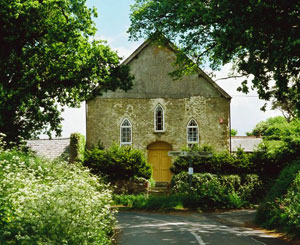
Thorncombe

 |
Thorncombe |
 |
Set in an area of outstanding natural beauty, the parish of Thorncombe is situated in north-west Dorset, bordering both Somerset and Devon, and forming part of the latter until 1844. The name derives from the Saxon words ‘torn’ and ‘cumb’, meaning ‘low ground where thorns grow’ and at the time of Domesday, Tornecome was held by Viscount Baldwin de Brionne. Since then it has been associated with several ancient families, including the Brook, Prideaux, Gwynn, Bragge and Trenchard families. As well as the village of Thorncombe, there are a number of hamlets in the parish,
including Hewood, whose houses are “group listed”, Holditch, with its picturesque ivy-clad
ruins of the Brook family’s fortified manor house and Laymore,
site of a former flax works, which straddles the parish boundary with
Crewkerne (Somerset). |
|
|
In the seventeenth century, Thorncombe was a hotbed of revolt, although few of the 33 Thorncombe men wanted by Judge Jefferies for participating in the failed Monmouth Rebellion were caught. By the 1770s, Thorncombe had become a centre for the wool trade and enjoyed a successful lace-making
industry. The population peaked at around 1,500, but declined steadily throughout the nineteenth century as the cloth
industry moved north. In 2001 the population stood at 714 and the principal activity of this 5,200-acre parish is now
agriculture. |
 The Venn Chapel Courtesy of Chris Downer |
|
The rectors of Thorncombe have numbered both the fortunate and the unfotunate.The fate of two successive Rectors of Thorncombe provides a case in point. Fortune smiled on Robert Gomersall, Rector of Thorncombe in the early 17th century, blessing him with moderate success as a poet and playwright. In marked contrast, his successor, royalist sympathiser John Bragge from the Sadborrow family, fell foul of fortune, being so frequently and so heavily fined by Cromwell's government after the Civil War that he was unable to properly carry out his duties to his parishioners during the last six months of his life. When he died his post was left vacant for so long that the villagers were forced to petition Parliament for a replacement. Although not particularly illustrious in his own right, the Reverend Samuel Hood, rector here from 1761 to 1777, was the father of two sons who rose through the ranks of the navy to become admirals. |
|
If you email Kim with queries about this parish please include "OPC Thorncombe" in your email subject line |
|
| Census |
1841 Census 1851 Census 1861 Census 1871 Census 1881 Census 1891 Census 1901 Census 1911 Census |
| Parish Registers | Baptisms 1674-1691 [Eve Higgs] 1691-1740, 1741-1783, 1784-1812, 1813-1851 Marriages 1552-1690, 1691-1812, 1813-1851, 1852-1921 Burials 1674-1691 [Eve Higgs] 1691-1740, 1741-1783, 1784-1812, 1813-1851 |
| Postal Directories | |
| Photographs |
By Kim Parker By Others |
| Other information |
Monumental Inscriptions Thorncombe Wills Announcements in regional newspapers 1723 oaths of allegiance, supremacy and abjuration Thorncombe Vicars 18th C. Thorncombe Freeholders Roll of Honour Survey of Thorncombe Manor 1729 [Zoe Martin] Winsham Independent Chapel Baptisms 1810-1837 Winsham Independent Chapel Burials 1810-1837 |
| Links |
Thorncombe Village Trust Thorncombe Parish Website Forde Abbey Website |
| Maps | |
|
View Larger Map |
|
| Records held at the Dorset History Centre [Ref PE-THO] |
Registers Christenings 1551/2-2005. Marriages 1552/3-1989. Burials 1551/2-1952. Banns 1754-1966 |
| Registration District
(for the purpose of civil registration births, marriages & deaths) |
1 Jul 1837-19 Oct 1844: Axminster (Devon) 20 Oct 1844-30 Apr 1896: Axminster (Dorset) 1 May 1896-31 Mar 1937: Beaminster 1 Apr 1937-31 Mar 1997: Bridport 1 Apr 1997-30 Sep 2001: West Dorset 1 Oct 2001-17 Oct 2005: South & West Dorset |
Visitors to Dorset OPC
Copyright (c) 2025 Dorset OPC Project